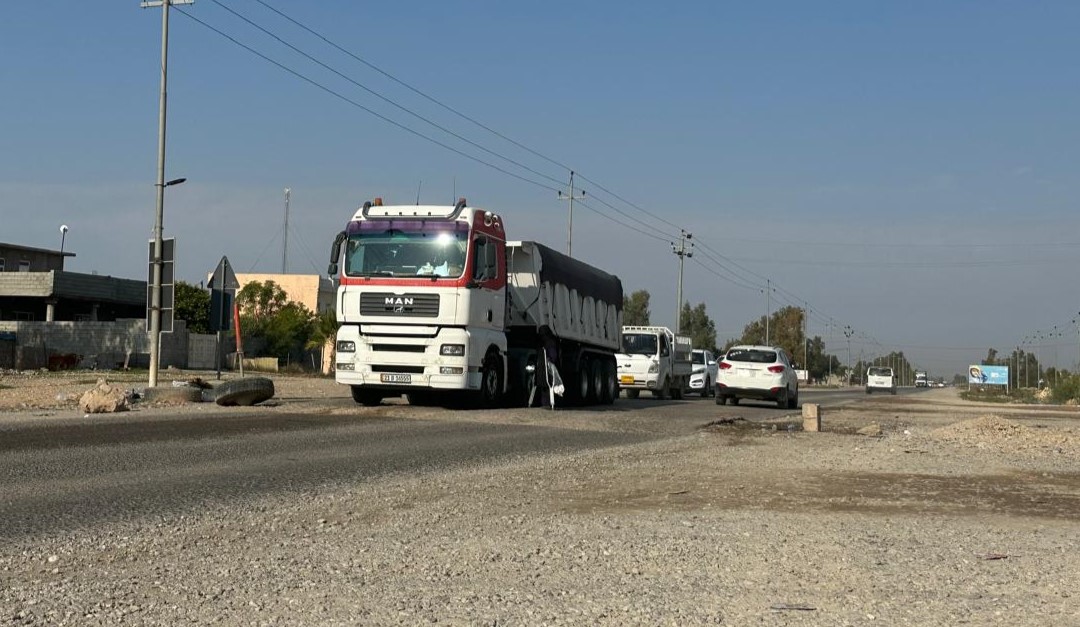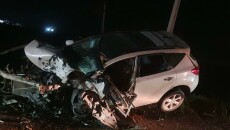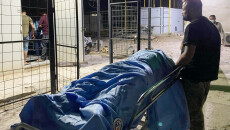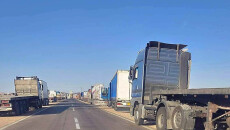Aram Mohammed is still in shock from the incident. He took his mother from Khanaqin to Kalar for treatment, but the poor roads separated them forever.
Last November, Aram, his mother, and brother were injured in a serious traffic accident on the main road from Khanaqin district to Kalar.
Aram's mother had just undergone surgery and occasionally went to Kalar to see a doctor. "My brother Bilal and I took her to Kalar for treatment one afternoon but our car crashed and I lost my mother and brother." Mohammed told KirkukNow, expressing his ongoing concern over the incident.
The driver of the vehicle was killed in the accident. Though Aram himself was seriously injured, his family forgave the driver's family and did not seek compensation.
"We hope that the road will be repaired and turned into two lanes because people are constantly being killed on this road," he peacefully requested.
In 2024 alone, 24 traffic accidents were recorded on the road connecting Khanaqin to Kalar, resulting in six deaths and 34 injuries, according to statistics from the Khanaqin Traffic Department of the Kurdistan Regional Government KRG.
Lieutenant Haider Wala, director of the Khanaqin traffic department, stated that the traffic accidents on the Khanaqin-Kalar road are due to its single-lane highway. Besides, drivers do not adhere to traffic laws and drive too fast.
The temporary traffic solution involves installing mobile surveillance cameras to address speeding issues, but it has proven challenging. Khanaqin is a disputed territory yet currently under the direct control of the central government.
The road is a narrow, one-sided 38-kilometer stretch, heavily trafficked and connecting the Kurdistan Region to central and southern provinces of Iraq. The traffic pressure is further exacerbated by the two border crossings with Iran, Mundhiriyah and Parwezkhan.
Khanaqin District, home to 90,000 Kurds, Arabs and Turkmens, Sunnis and Shias, is part of Diyala province and is one of the disputed territories which extends from Khanaqin, on the border with Iran, to the northern oil-rich city of Kirkuk up to Shingal (Sinjar), home to the Ezidi community, in Mosul, in the far west, on Iraq-Syria borders.
Most of the disputed territories were under control of the Kurdish Peshmerga forces up to October 2017, when the Iraqi Security Forces ISF took over control of these territories following the defeat of the so-called Islamic State in Iraq and Syria ISIS.
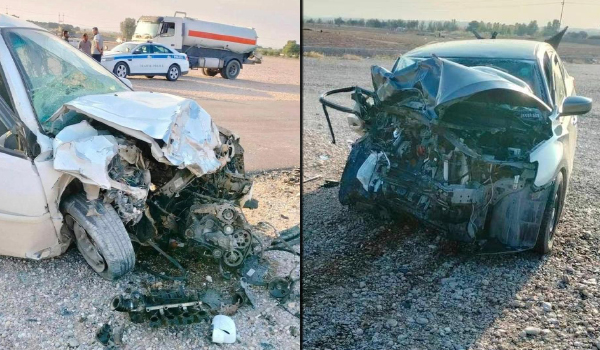
Aram lost his mother and brother this car accident, Khanaqin, Diyala, 2024. Media of Traffic Police.
Mohammed Hamid, 75, a passenger bus driver, expressed, "Most drivers speed and do not obey limits, turning this road into a death trap where victims are from Khanaqin and Kalar."
Locals are pessimist that the project of turning the highway into two lanes might come true.
"I will go to the grave, but the Kalar-Khanaqin road should not become a death trap," Hamid added.
Last year, Iraqi Prime Minister Mohammed Shia Sudani visited Diyala province and announced various projects, including a pledge to allocate 25 billion dinars for Khanaqin-Kalar highway, as stated in a video message by Diyala Governor Adnan Shamari. However, the project implementation date remains unknown.
Jawad Faizullah, the mayor of Khanaqin, emphasized that the Khanaqin-Kalar road is a crucial project for the region. After approval from the Ministries of Reconstruction and Finance, the project is now with the Iraqi Ministry of Reconstruction for implementation.
"The project spans from Khanaqin municipality to Kalar municipality, aiming to prevent further tragedies on the road," Faizullah explained.
In Iraqi provinces, excluding the Kurdistan Region of Iraq KRI, over 252 people are killed and more than 1,000 injured in over 900 traffic accidents monthly, according to a report by the Central Statistics Agency.
Salah Mohammed, 64, a driver transports Khanaqin college students, described the road as “one of the most dangerous roads because it is very narrow and crowded.”
He had been involved in a traffic accident a few months ago, but there were no casualties reported.

